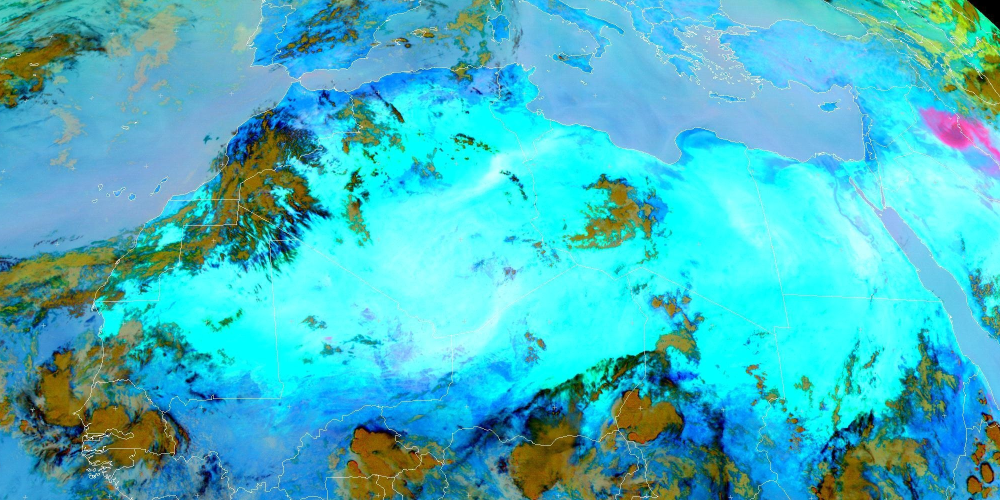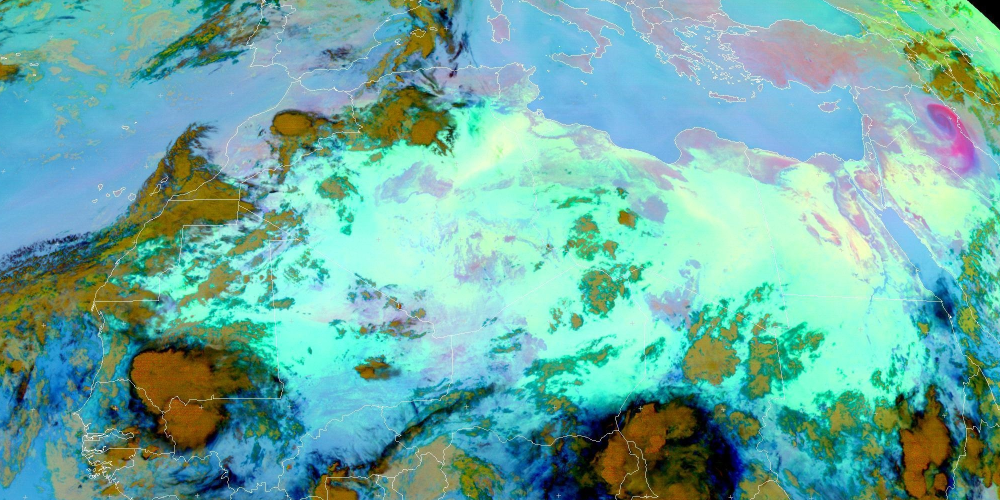aquamarine
Sandy desert appears cyan in the Ash RGB images: aqua-cyan when the surface is hot, or light greenish cyan (aquamarine) when the surface becomes colder. In case the area is covered by a very thin dust cloud (and/or the vertically integrated water vapour content is very low) the colour becomes lighter (almost white).
The images below show the Sahara at noon and midnight. Note that a dust cloud is seen over the Arabian Peninsula.

Meteosat, SEVIRI Ash RGB for 1 September 2015 12 UTC (Source: EUMETSAT, Real-time images)

Meteosat, SEVIRI Ash RGB for 1 September 2015 00 UTC (Source: EUMETSAT, Real-time images)
Note that rocky desert appears bluish during daytime and pinkish in the night.
Explanation of the colours of sandy desert (see the recipe):
• The red signal may change from weak to strong. The (IR12.0 - IR10.8) brightness temperature difference increases if the area is covered by a very thin dust cloud (and/or the vertically integrated water vapour content is very low).
• The green signal is usually saturated. The (IR10.8 - IR8.7) brightness temperature difference is high for sand, because the emissivity of sand is much lower in the 8.7 than in the 10.8 micrometer channel. The difference is usually higher than the upper limit of the corresponding range (see the recipe on the left).
• The IR10.8 brightness temperature depends on the surface temperature, which has a strong daily cycle. The blue signal is strong/saturated during daytime. During nighttime it is medium strong or higher, but not saturated.
As a consequence the hot sandy desert appears cyan, while in the night the colour tends towards aquamarine (light greenish cyan). In case the area is covered by a very thin dust cloud (and/or the vertically integrated water vapour content is very low) the colour becomes lighter (almost white).

